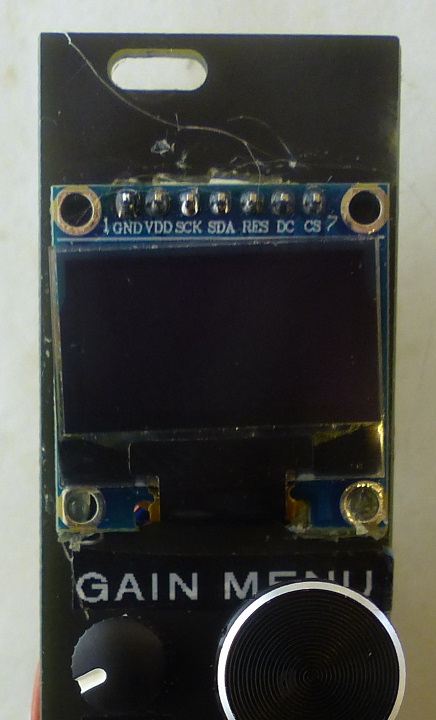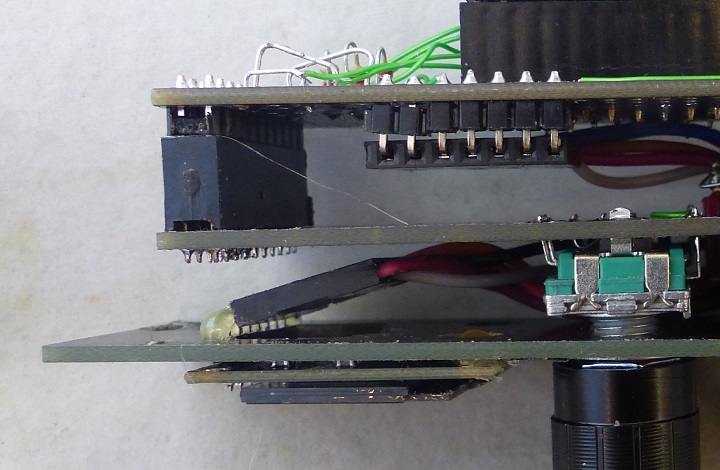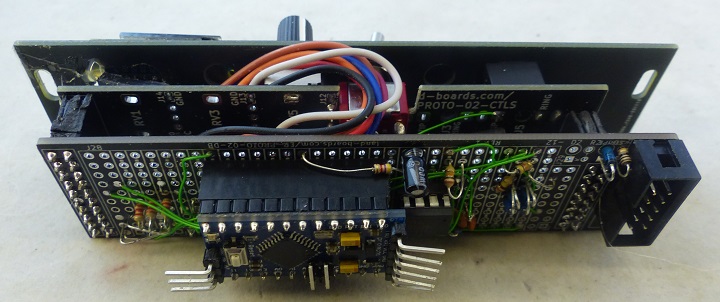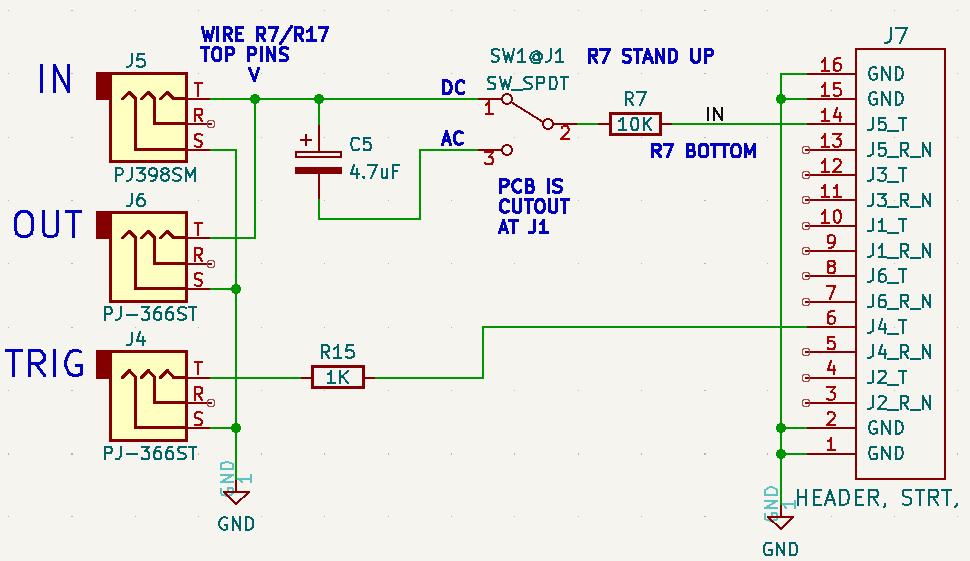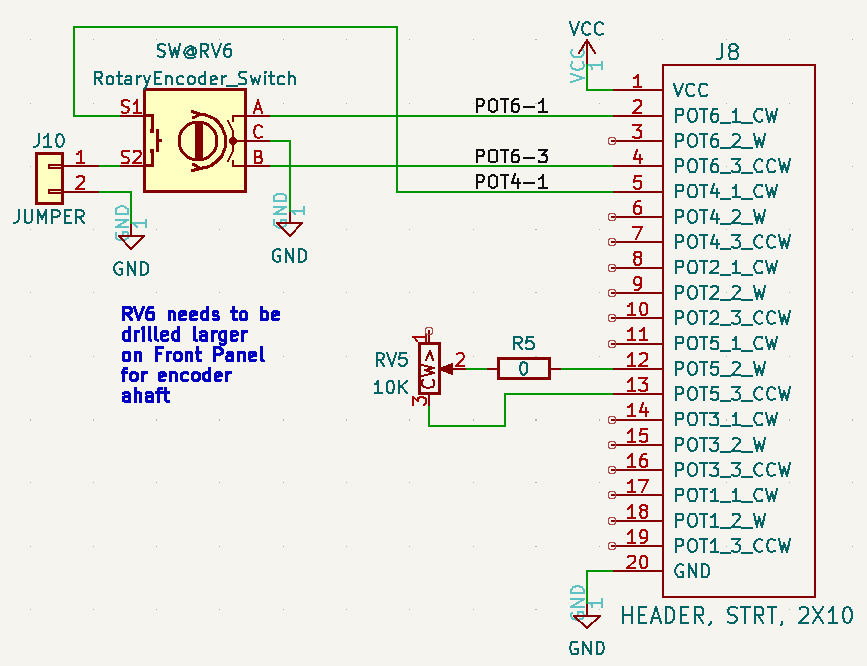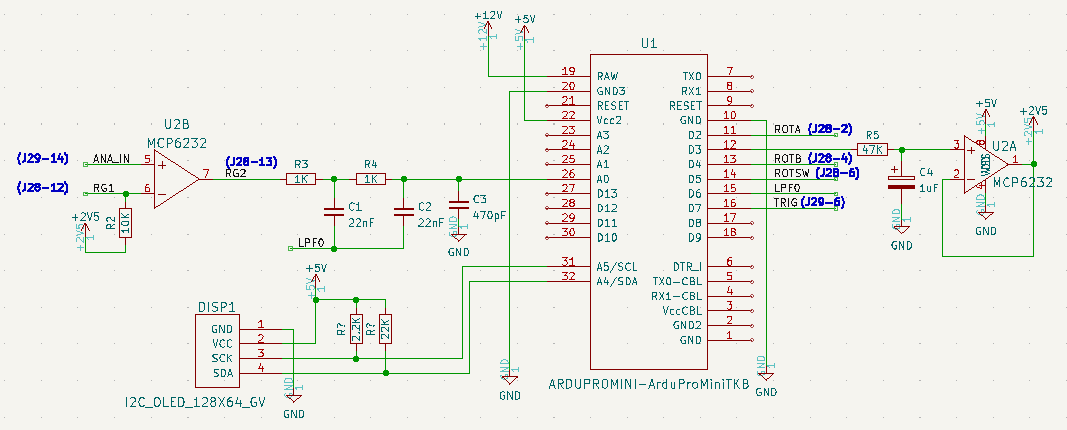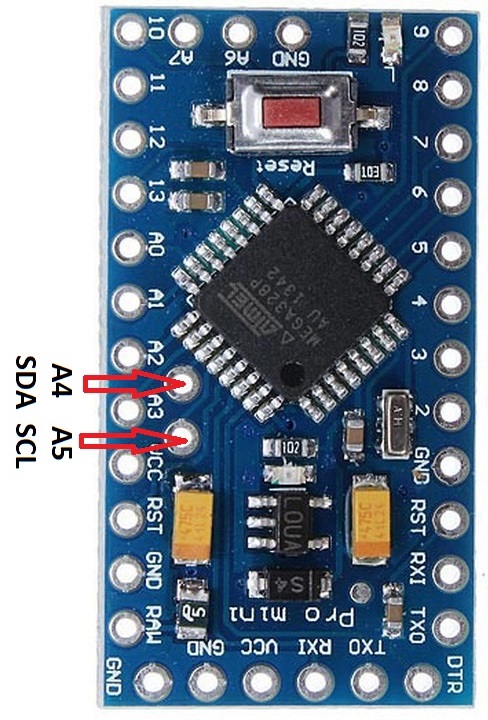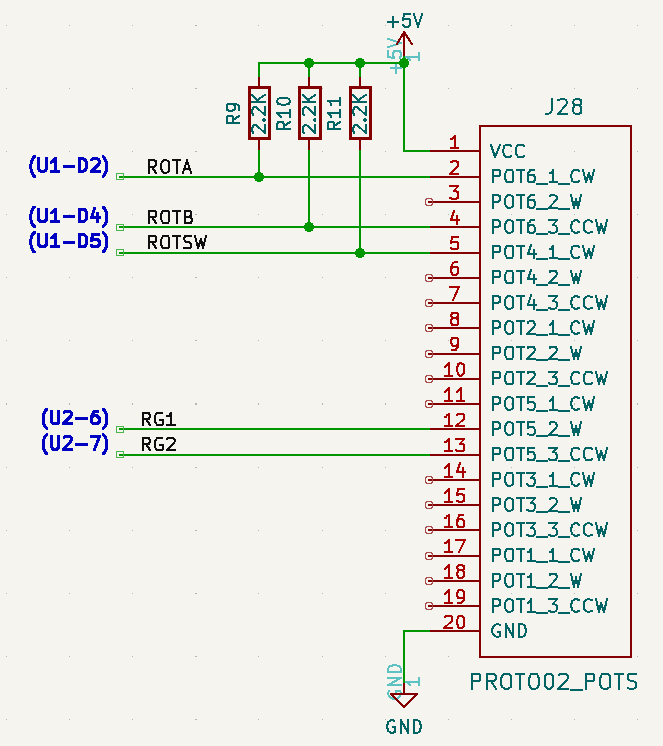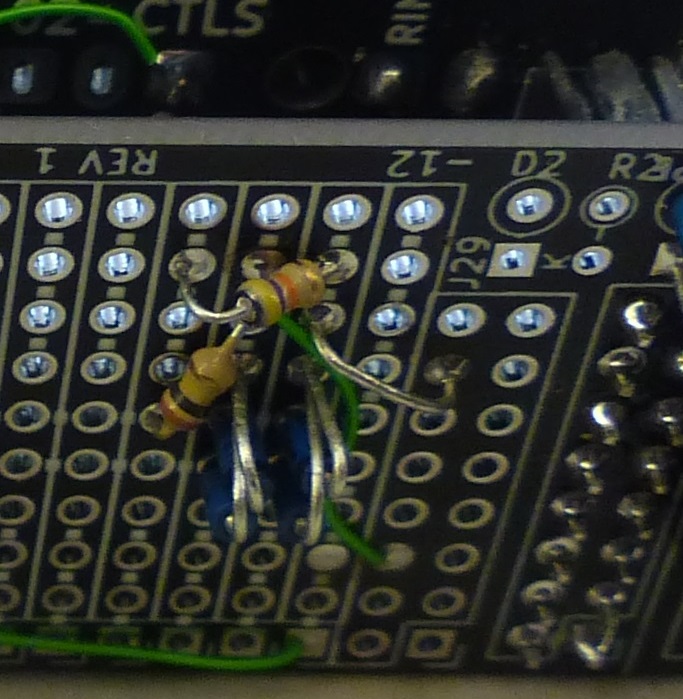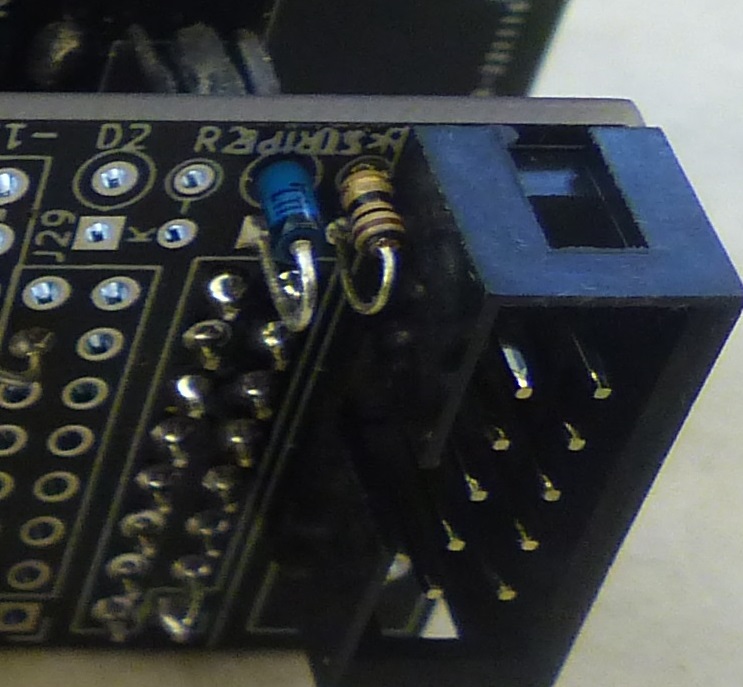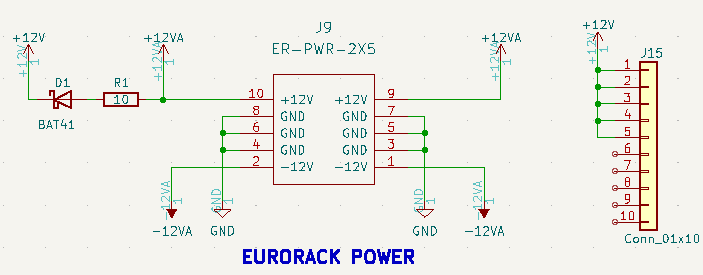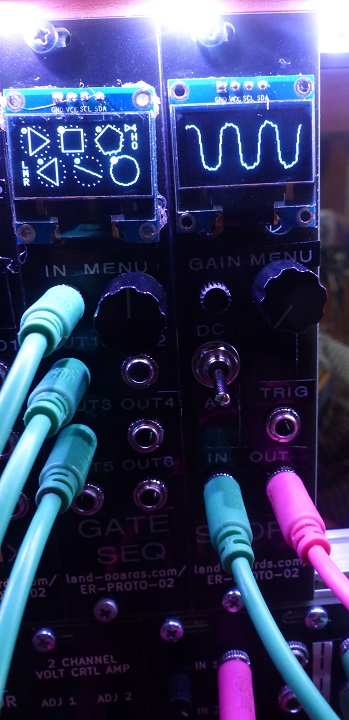ER-SCOPE-01
Jump to navigation
Jump to search
Contents
Features
- HAGIWO design
- Differences from HAGIWO
- Using Arduino Pro Mini - smaller package than NANO
- No USB but USB is not used after download anyway
- Initially used I2C OLED
- Probably affects screen refresh rates
- Switched to SPI OLED
- Using Arduino Pro Mini - smaller package than NANO
- OLED : 128*64 pixel 0.96inch
- Knob1: Rotary encoder for selection (including push switch)
- Knob2: GAIN
- Toggle SW : AC/DC switching
- TRIG IN : External trigger IN
- Input : Signal to be observed IN
- Observable voltage is 5 V p-p
- Output : Observable signal OUT (short circuit with INPUT)
HAGIWO Schematic
Design Details
- Built on ER-PROTO-02 card set
Front Panel/OLED Mounting
- Glue on OLED with a couple of drops of Hot Glue in corners
- White on Black P Touch labels
- 7 pin right angle header mounted to rear of daughtercard
- OLED - replace straight header with 1x7 right angle header
- SPI wire colors on schematic
- Tuck OLED wiring around switch
On Controls card
- Wire top pin of R7 to top pin of R17 (connects J5 to J6 tip)
- SW1 goes in cutout at J1
- SW1 up = DC coupled, down = AC coupled
- R7 stands up at bottom of R7 and wires to SW1 center
- 4.7uF cap from SW1 top to SW1 bottom
- + side of cap to SW1 bottom
- - side of cap to SW1 top
- Wire from J5 tip to SW1 bottom
On Daughterboard
CPU
- Arduino Pro Mini CPU
- I2C header used with I2C OLED
Pot/Rotary Encoder connections
- Solid resistor wires are "stiff" enough to not need to use insulation
Jacks connections
Power
Software
- ER-SCOPE Hardware tests
- ER_SCOPE_V01 - Application code I2C Display
- Resources (ATMega328)
Sketch uses 19866 bytes (64%) of program storage space. Maximum is 30720 bytes. Global variables use 807 bytes (39%) of dynamic memory, leaving 1241 bytes for local variables. Maximum is 2048 bytes.
- ER-GATE-SEQ-01 on left



